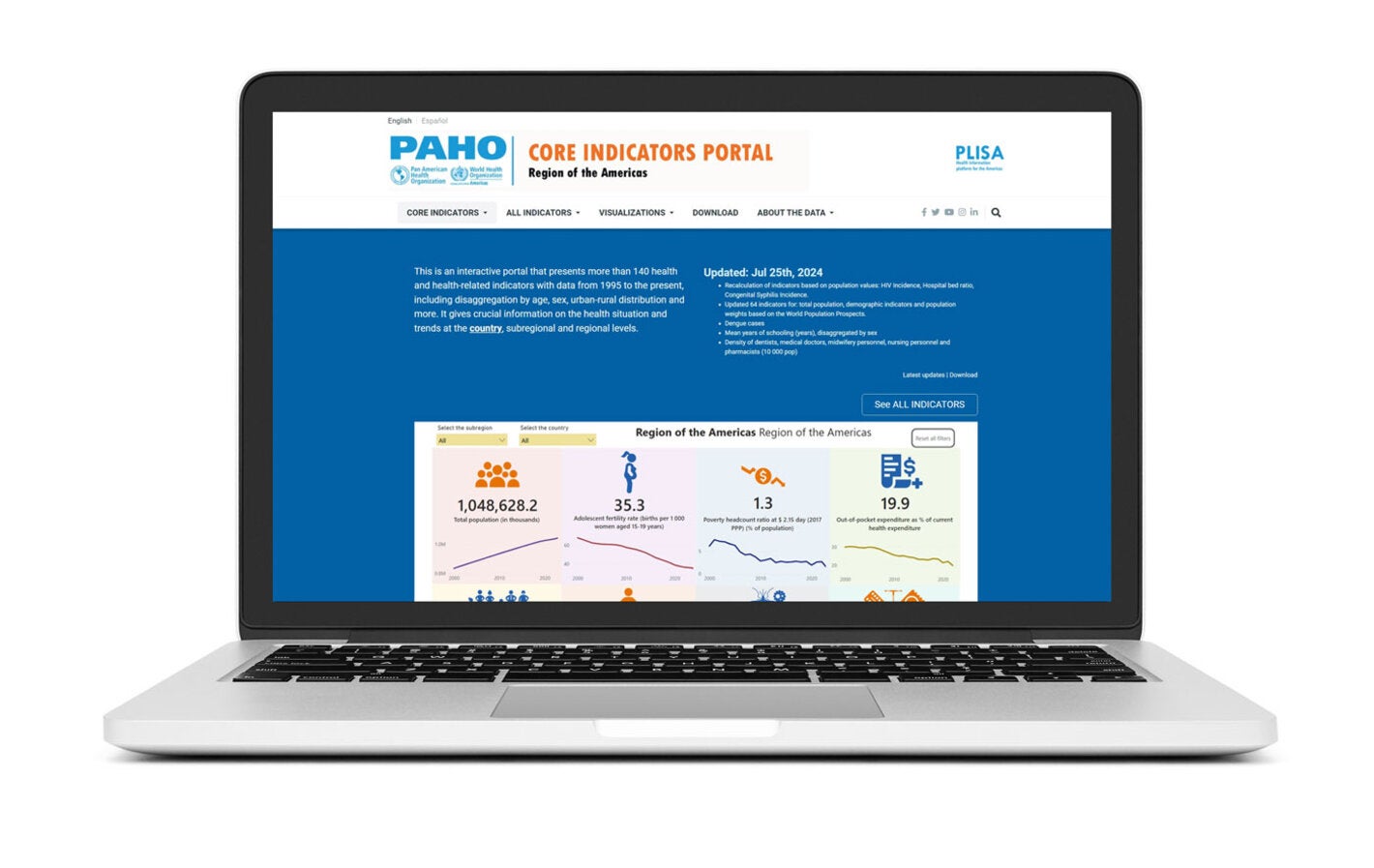
Washington, DC, August 7, 2024 (PAHO) – The Pan American Health Organization (PAHO) has recently optimized its Core Indicators Portal, a tool that provides crucial health data for 49 countries and territories in the Americas. The initiative was created in 1995, when data was disseminated via printed booklets. Starting in 2021, the online portal was developed and now offers a more detailed and accessible view of the health situation in the Region.
The platform integrates data from various sources to facilitate in-depth and comparative analyses. Users can examine and download information on mortality trends, morbidity, health risk factors, socioeconomic and demographic indicators. The disaggregated presentation of data allows users to explore the differentiated interaction of access to health services and social determinants, providing valuable inputs for analyses of health outcomes.
"The portal offers comprehensive information on demographics, socioeconomic and environmental factors, health issues, and the health systems response, both at the regional and national levels," Sebastián García Saisó, Director of the Department of Evidence and Intelligence for Action in Health at PAHO said. Among the available data are the incidences of HIV and congenital syphilis, dengue cases, infant and maternal mortality, and the availability of health professionals such as dentists, doctors, nurses, and pharmacists.
Since 2021, new functionalities have been added to the portal new functionalities, including dynamic dashboards with tables and graphs that cover 140 indicators. This information is disaggregated by sex, age, urban/rural, among others. These tools allow for more detailed and precise analysis of data. Technical Specifications have also been added to ensure the correct interpretation of the information.
"The Core Indicators Portal continues to be a fundamental resource for policy formulation, data-driven decision-making, and the strengthening of health information systems. It also contributes to the monitoring and advancement of the health goals set for the Americas," García Saisó said.



